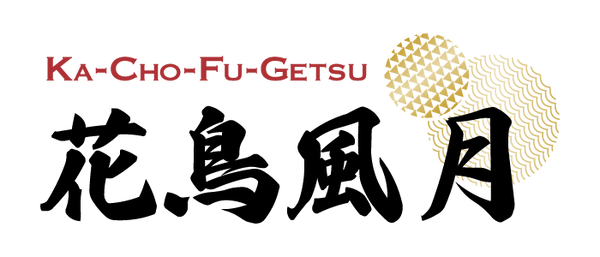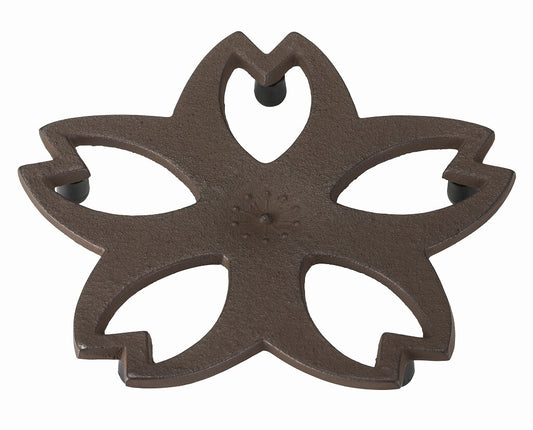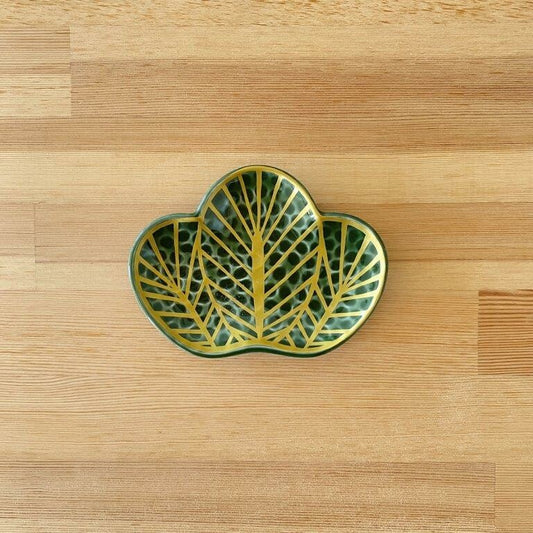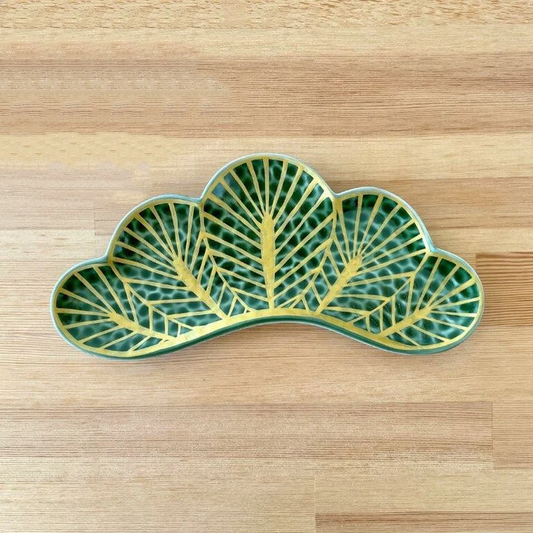
(Peonies/Seven-Character Quatrain)
What is a Kakejiku?
A “kakejiku”(掛軸), is a hanging scroll that is traditionally used as indoor decoration. It features paintings or calligraphy mounted on cloth or paper, with bamboo or wood scrolls attached at the bottom. These are typically hung in an alcove (“tokonoma”) or similar space. When not in use, they can be rolled up and stored in a box, making them easy to carry and protecting them from stains or damage from sunlight. Vertical scrolls are called “tatejiku”, and horizontal ones are called “yokofuku”.
When you have three or more kakejiku, they are counted as "fukutsui." For example, three kakejiku are counted as three fukutsui ("sanfukutsui") and four as four fukutsui ("shifukutsui").
History of the Kakejiku
Kakejiku are said to have come to Japan from China with the introduction of Buddhism in the Asuka period (538-710 AD). The scrolls from this period were first introduced to Horyu-ji Temple (present-day Ikoma-gun, Nara Prefecture) and are now in the collection of the Nara National Museum (Nara City, Nara Prefecture). This collection includes the national treasure, the "Eleven-Faced Kannon Statue”. At that time, kakejiku were popular only among priests and aristocrats, and were rarely used by common people. It is estimated that kakejiku with the same mounting as those seen today were already introduced to Japan during the Heian period (794-1185).

(Zen Master with Meditation Staff, and Chinese-Style Landscapes)
Ink and wash painting (“suiboku-ga”) was introduced to Japan in the Kamakura period along with Zen Buddhism. As Zen Buddhism spread among the general population, so did this ink and wash painting. Zen monks painted suiboku-ga, which became popular as an art form expressing Zen thought. As suiboku-ga spread, hanging scrolls became known to the general public. At first, many of the ink and wash paintings were strongly Zen in conception, but gradually the themes of "Karesansui" (dry landscape) and "Kacho Fugetsu" (flowers, birds, winds, and the moon) were taken up, and ink and wash paintings for artistic appreciation began to be produced. In line with this trend, hanging scrolls began to be decorated to make the ink paintings look more beautiful.
From the late Kamakura period to the Muromachi period (1333-1573 AD), the "shoin-zukuri" style, in which the study was the main room, became the mainstream, and there was a section called "oshiita" where a thick board with shallow depth and wide frontage was laid. In the Muromachi period (1333-1573), the oshiita was placed one step higher than other areas to welcome the lord of a samurai residence. In order to match the background paintings, hanging scrolls were hung to show the lord's authority and prestige, which became the prototype for the current “tokonoma”.
During the Edo period (1603-1867), the five seasonal festivals became holidays. The culture of enjoying the changing seasons by changing the hanging scrolls to match the festivals spread not only among samurai families but also among aristocrats and townspeople. In the mid-Edo period, "bunjinga" or paintings by scholars who were not professional painters became popular, and the techniques of “Yamato hyoso” (a form of mounting that developed uniquely in Japan) and “bunjin hyoso” (a form of mounting introduced from China) were further developed. Numerous works were produced by the artists who were employed in Edo and Kyoto, and the artistic value of these works increased
Tea Ceremony and Kakejiku

The hanging scrolls used in the tea ceremony room were called "chagake" (tea hanging). The chagake differs from other hanging scrolls in that the width of the scroll is narrower to fit in the so-an (a hut with a roof made of straw or other material), where the tea ceremony is held.
Kakejiku, or hanging scrolls, are an indispensable tool in the tea room. Sen no Rikyu, a famous tea master, believed that "there is no tool more indispensable to the tea ceremony than kakejiku," and he placed the same importance on kakejiku, or hanging scrolls, as he did on tea utensils. By displaying kakejiku in the tea room, the tea ceremony host (“teishu”, the person who presides over the tea ceremony) expresses his or her intention to make the tea room a special place. In addition, it is thought that the words on the hanging scroll expressed the manner in which guests were entertained.
The style of hanging scrolls have also evolved with the tea ceremony. Its dimensions are defined so that it looks beautiful when viewed from a sitting position, and it is made in consideration of the size of the tokonoma (alcove) and the tatami mats.
What Types of Kakejiku are There?
Kakejiku can be categorized by usage into types such as "celebratory kakejiku", "seasonal festival kakejiku," "flower and bird kakejiku," "animal kakejiku," "landscape kakejiku," and "religious kakejiku."
Celebratory Kakejiku

(Crane, Tortoise, Pine, and Bamboo under a Rising Sun)
“Shugi-gake" refers to hanging scrolls displayed on festive occasions such as betrothal, marriage, and New Year's Day. Since they are used to celebrate festive occasions, many of the designs on them are considered auspicious, such as pine, bamboo, plum, cranes, turtles, the rising sun, and “Takasago” (high sand).
Seasonal Festival Kakejiku
“Sekku” hanging scrolls are decorated for seasonal festivals such as “Momo-no-Sekku” (Girls’ Festival) and “Tango-no-Sekku” (Boys' Festival). Since the time of year when sekku hangings are displayed is limited, the appropriate design is also determined for each festival. For Tango-no Sekku, helmets, tigers, and other items appropriate for wishing for the healthy growth of boys are used, while for Momo-no Sekku, “ohinasama”, peaches, and other items of good omen for celebrating girls are preferred.
Flower and Bird Kakejiku

(Birds and Flowers of Summer and Autumn)
“Kacho-ga” (flower-and-bird paintings), which are mainly composed of flowers and birds, are a very standard type of Japanese painting, and can be adapted for a variety of uses. They are also suitable for daily use, and seasonal flowers and birds can be displayed to create a sense of the season.
Animal Kakejiku


(Shakyamuni Emerging from the Mountains, with Dragon and Tiger)
(Carp)
“Dobutsuga” (paintings featuring animals) are also popular. Tigers and dragons are staples of Japanese painting. The carp, symbolizing success, is also widely favored. Because these animals represent strength, they are hung as charms to protect children from evil spirits. They are also used to celebrate elections and promotions.
Landscape Kakejiku

(Mount Penglai with Eight Views of Xiao and Xiang)
“Sansui-ga” (landscape paintings) depict scenes of mountains and rivers. These calm and elegant paintings can be used for a variety of purposes. It can be displayed in a room year-round, and it is also appropriate as a housewarming gift. Among landscape paintings, those depicting Mt. Fuji are very popular with Japanese people because they are believed to bring good luck. There are various types of Mt. Fuji paintings, such as a red Fuji or a snowy Fuji - each showcasing completely different Fujis.
Religious Kakejiku

(Luring the Sun Goddess Amaterasu Out of a Cave with Music; Death of the Historical Buddha)
"Shinbutsu-ga" refers to hanging scrolls used in Shinto and Buddhist rituals.
Shinto Paintings: These include scrolls for Shinto shrines, such as those depicting Amaterasu Omikami, the Seven Deities of Good Fortune, and Tenjin-sama. They are called "shin-go" or "shinji-ga."
Buddhist Paintings: These scrolls, called "Butsuga," depict Buddhas and Bodhisattvas. Unlike other paintings, Butsuga are used for worship. They are displayed to ask for protection for the house and are often offered tea and other offerings. In some cases, they are treated like Buddhist statues, so their placement should be chosen and handled with care.





